Vital Ocean Voices is a series of stories from people living in coastal communities around the Indian Ocean, providing first-hand accounts of the impacts of destructive fishing, pollution and climate breakdown.
Coral reefs in the Seychelles and the Western Indian Ocean (WIO) region have been destroyed by ocean warming and coral bleaching events. Seychelles is dependent on coral reefs for healthy oceans, as well as for fisheries and tourism, both the main pillars of its economy. A decade ago, an ambitious ground-breaking coral reef restoration project was started in Seychelles by local NGO Nature Seychelles. It has made remarkable progress by raising thousands of coral fragments in underwater nurseries and transplanting a degraded reef with these in the marine protected area (MPA) of Cousin Island Special Reserve.
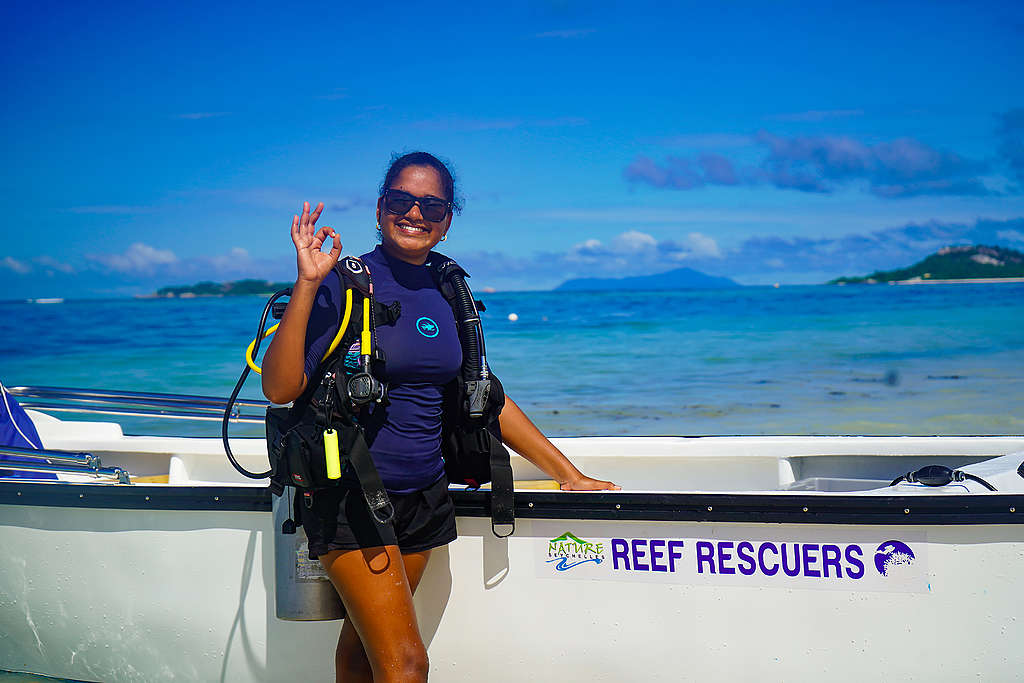
25-year old Athina Antoine has been a part of the Nature Seychelles’ Reef Rescuers team since 2017. She was fresh out of the Seychelles Maritime Academy when she began working on the project in 2017. A marine engineering graduate, she had no previous coral restoration experience. But she had the enthusiasm and drive to learn. Today, she’s confident and self-assured and proud of the achievements made by the Reef Rescuers.
Like most Seychellois, Athina has spent a lot of time on the water. “I started swimming when I was very little,” she says. “At age 16, I started diving. So when the opportunity came up to join a team of coral restoration specialists as a technical assistant, I jumped in – feet first, head later. I had no marine biology qualifications, and up to that point, I had no idea how important coral reefs were. But I wanted to find out.”
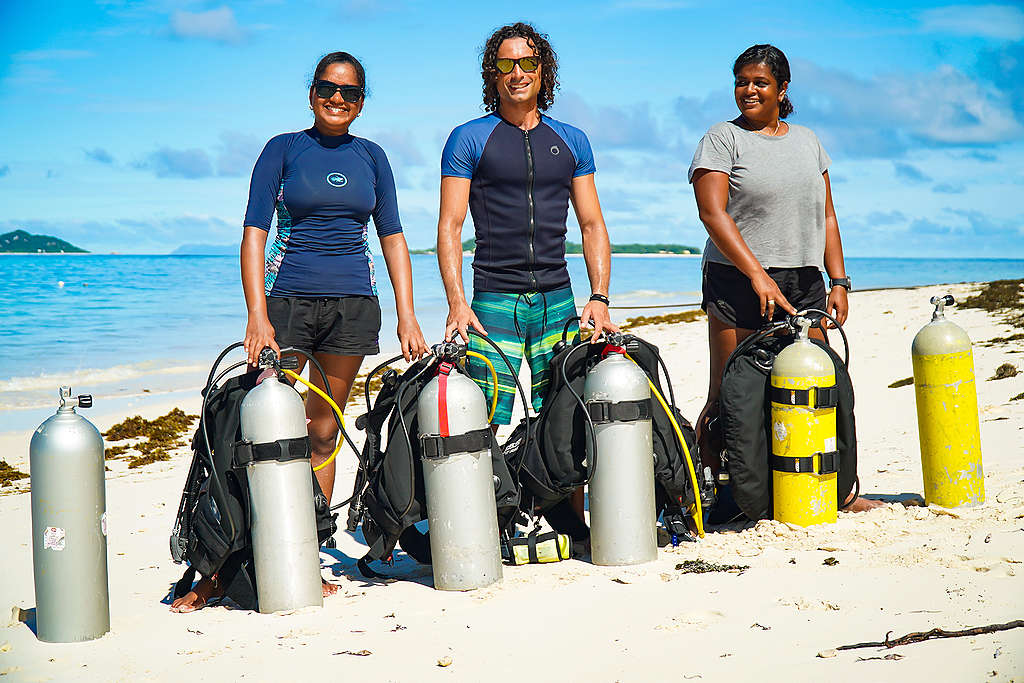
A typical day for Athina starts at 8 am. We caught up with her on Praslin, Seychelles’ second largest island where the Reef Rescuers are based at their aptly named Centre for Ocean Restoration Awareness and Learning (CORAL) building. Alongside restoration specialists Luca Saponari and Roshni Yathiraj, she is preparing to set out for Cousin Island Special Reserve, the site for their project.
For the past week, the team has kept watch on the weather after unexpected rain lashed the island for several days affecting visibility and making it difficult to dive. Fortunately, it’s bright and sunny today as the team loads up their gear onto a truck and prepares to set out.
In the water, Jacques, their boat skipper patiently waits to ferry them to the nursery site. Time is of the essence and everyone quickly jumps off the truck and starts carrying dive gear and other equipment to the boat. Soon after, the small boat cuts through the water towards Cousin.
Location, location
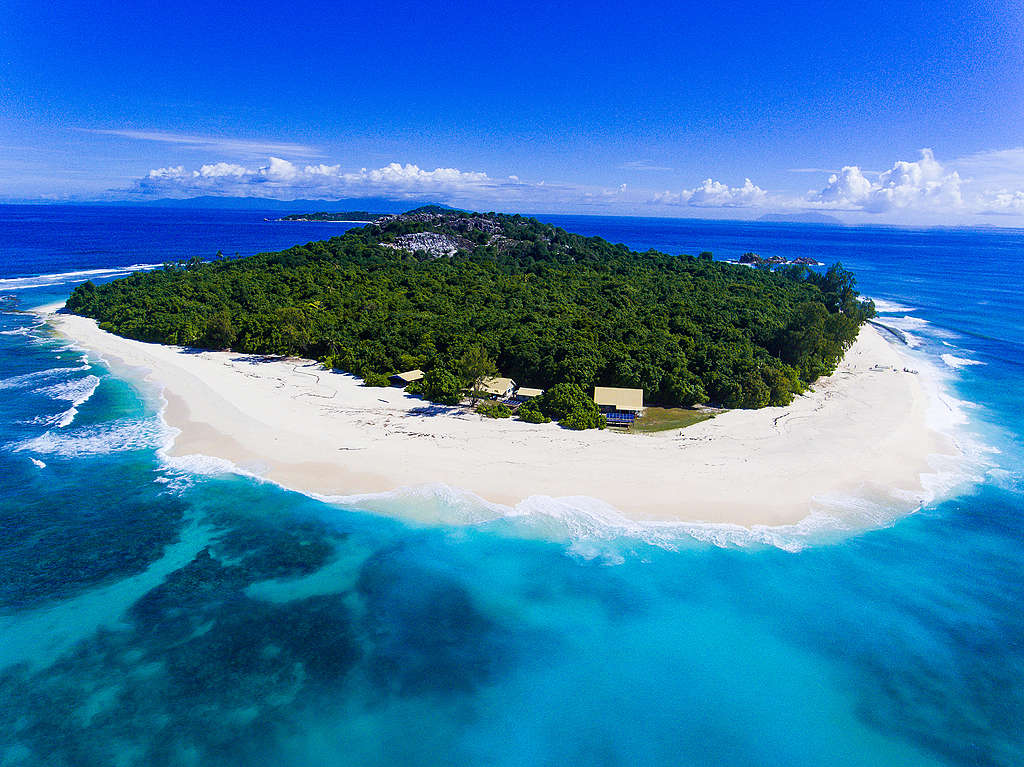
The coral nursery is within the marine protected area of the Special Reserve. A previous coconut plantation, Cousin was famously bought to save the near extinct Seychelles warbler in 1968. Today, it’s a runaway worldwide conservation success. It is the most important nesting site in the Western Indian Ocean for the Critically Endangered Hawksbill turtle (Eretmochelys imbricata), which depends on healthy coral reefs as its feeding habitats.
Coral fragments are collected from donor sites identified through surveys, which also help with coral species selection. “We gather either naturally-broken fragments or harvest from a healthy colony for the nursery,” Athina explains.
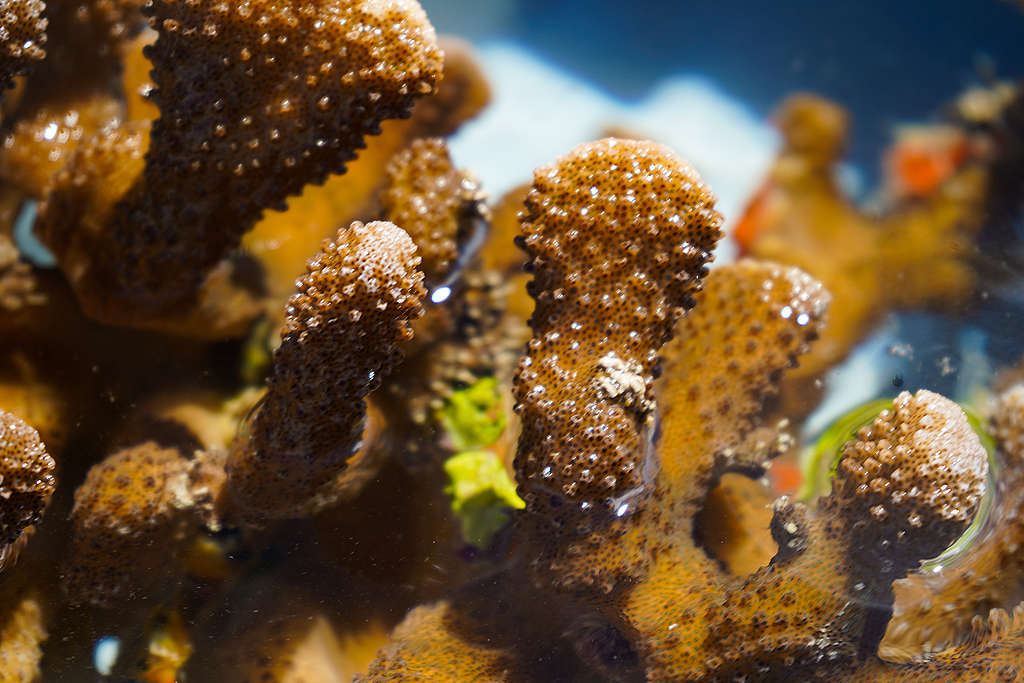
up a mother colony of yellow-orange coral into smaller pieces © Frankie Rignace
Luca and Roshni set off to collect coral colonies for the nursery. As soon as they return with the donor colony, they submerge it into a tub filled with seawater and Athina begins to break it into smaller pieces using a hammer and chisel. She then inserts them into a rope by splicing it.
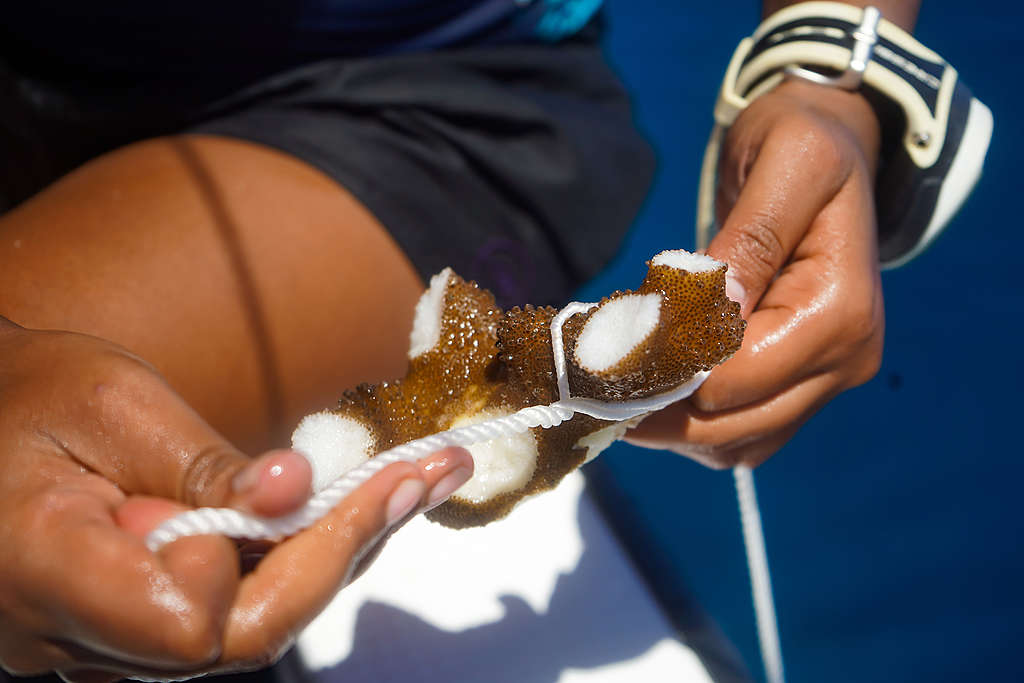
“The fragments we collect are too large to be transferred onto the nurseries, that’s why we break them into smaller pieces, called nubbins. The ideal size for a nubbin varies but the general rule of thumb is about 8cm long,” she says.
The team is currently stocking the nursery with colonies from the genus Pocillopora, an important reef building coral in Seychelles. Nurseries are typically suspended 10 metres in midwater and are anchored at a bottom depth of 18m. They are made of bars, ropes, and pipes, with coral fragments dangling from the suspended ropes.
A garden under the sea
Once the rope is laden with fragments, the team rolls off the boat and heads straight to the nursery with Luca and Athina holding each end of the rope to avoid entanglement.
“When you reach the section of the nursery, both push the rope towards the frame and fasten it,” Athina explains. “You attach it with cable ties checking if all the corals are still attached to the rope. There’s an average of 50 on a 10-metres rope.
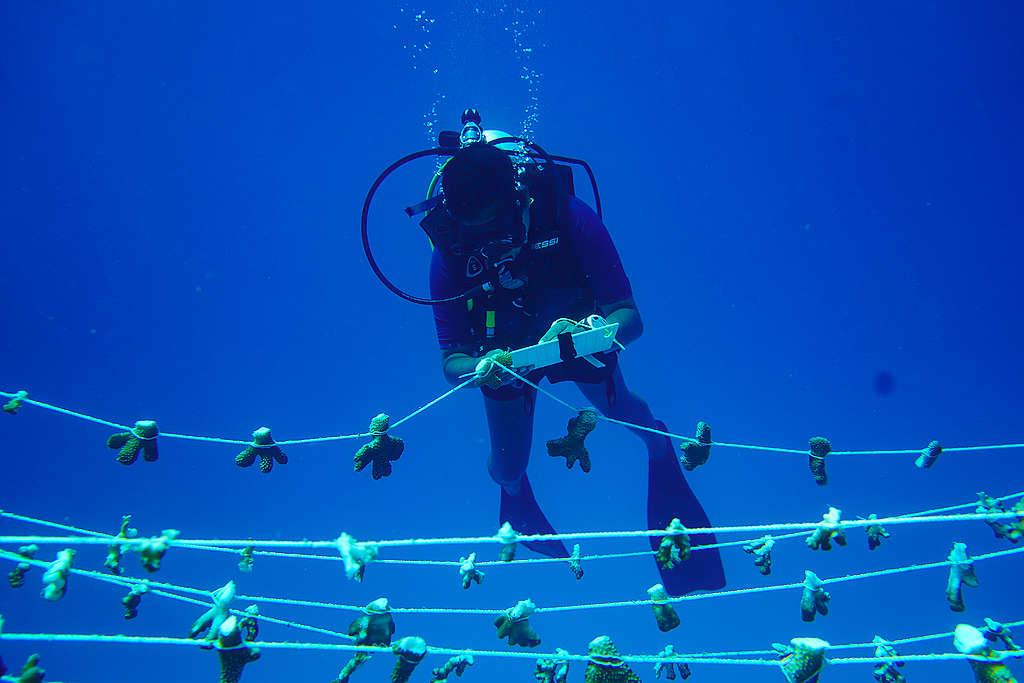
For monitoring purposes, some fragments are tagged. Every 3 months, using a caliper or software, the team checks their growth. The Reef Rescuers regularly clean the underwater nursery ropes of algae and other biofouling organisms that can outcompete the corals. This is an arduous task that takes a lot of time. They also check the condition of the nursery structure as well as its buoyancy.
The method picked for restoration is called reef gardening. It was first trialled on an experimental basis in Israel. This is the first ever large-scale application of the technique in the world. After the corals in the nursery reach a desired size, usually after 9-12 months, they are transplanted onto degraded reefs.
Just like human babies, the corals cannot be left alone for long. “I have a coral baby I frequently check on. I planted it in December 2019, and whenever I pass the transplantation site, I look out for that one coral. Seeing its growth and the site teeming with corals and fish makes me very happy. I have been fortunate that in the years I’ve worked on the project, I have not seen corals bleach. I think it would be depressing to see corals I have planted bleach,” Athina says.
White skeletons
Athina was only 2 in 1998 when the first severe coral bleaching occurred in Seychelles.
Coral bleaching is caused by high ocean temperatures and pollution. When this happens the corals expel their algae partners that give them their characteristic colour, and the corals appear to have been “bleached”. In this state, they are prone to disease and death.
A dead reef cannot provide ecosystem services such as feeding grounds for fish, coastal protection, and sustaining white sandy beaches. Species like turtles and fish depend on healthy corals. Tourism in Seychelles benefits from healthy coral reefs, which give the country the sandy beaches it’s famous for. Cousin island’s ecotourism programme began in 1972. Revenues are ploughed back into conservation and running of the island.
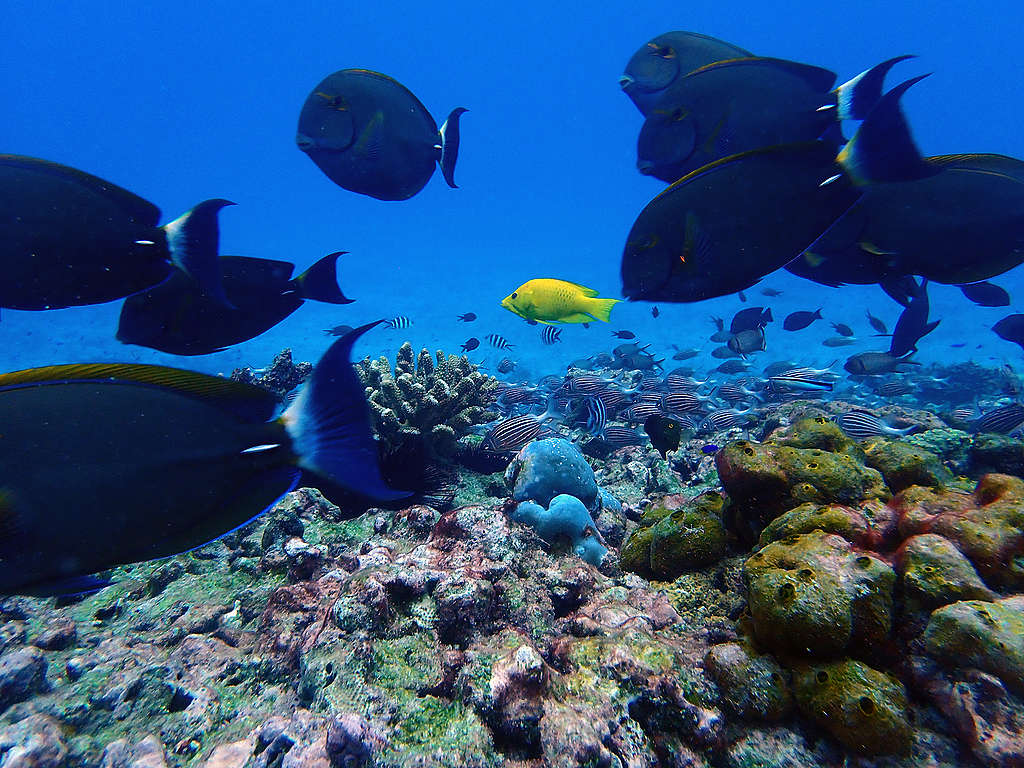
Corals can recover from bleaching, but if the environmental stress continues for long they eventually die. On Cousin Island, surveys carried out nearly a decade later after the bleaching showed it was unlikely for corals to recover on their own. So Nature Seychelles decided to intervene.
As we wrap the nursery dive, Athina expresses her hope that other people will get involved in coral reef restoration, “I think telling people about my experience will encourage them, especially the youth. Seychelles is small. We are surrounded by a sea so lots of people tend to work in the ocean; they’re skippers, tour guides, fishers and divers. But when you are doing something to preserve the environment it’s something really different. You are doing two things at the same time – you are conserving and you are doing what you love doing on the water.”
The team is soon back on land, a full day’s work behind them. Tomorrow, barring bad weather, they’ll be back underwater.
Liz Mwambui is the communications manager for Nature Seychelles, the Seychelles NGO running the Reef Rescuers project on Cousin Island Special Reserve.
Photography by Frankie Rignace (Com & Click), Luca Saponari, Roshni Yathiraj and Athina Antoine. Edited by Dr. Nirmal Jivan Shah
Guest authors work with Greenpeace International to share their personal experiences and perspectives and are responsible for their own content.
